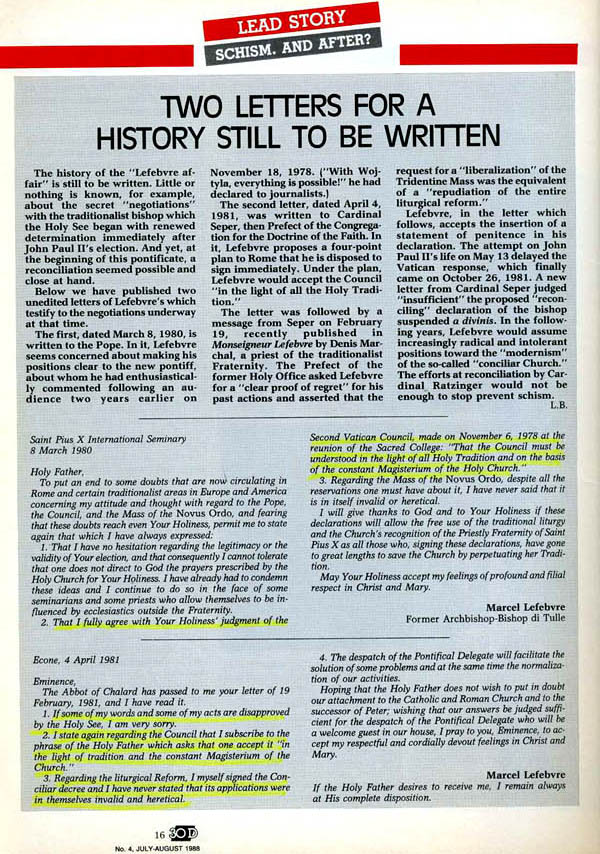


Since then, other practical steps have been taken towards the restoration of Tradition. Despite this lack of agreement, Rome wanted to move ahead on the practical side, putting forward the plan of a personal prelature for the SSPX, a plan that was first proposed back in 2011. The Roman hierarchs involved in the discussions did not agree with the position expressed by the SSPX-the position that Vatican II is, in three aspects (religious liberty, ecumenism, and collegiality), a break with the constant teaching of the Church. The success at the practical level, however, was not matched by a parallel success at the doctrinal level. The pre-conditions were more or less fulfilled and the doctrinal discussions took place. The Declaration cited above mentioned how the fulfillment of those conditions “would greatly benefit the Church by re-establishing, at least in part, her rights to her own Tradition.” The conditions were freedom for the traditional Mass and the rescinding of the decree of excommunication of the SSPX’s bishops. Bishop Fellay asked for doctrinal discussions with Rome and also requested that two practical pre-conditions be fulfilled before the discussions would commence. The first is that the SSPX has been attempting, since its contacts with Rome were established again in 2000, for a restoration of Tradition at both the practical and doctrinal levels. Two preliminary notesīefore delving into the details, two preliminary notes must be made.

As such, this article understands an ‘as is’ recognition in the same sense as the General House, and especially as a phrase that include freedom for the SSPX to profess openly its doctrinal stances, to maintain its liturgical practices, and to retain its properties and places of worship. The purpose of the article, as with the “Unity of Faith with Pope Francis” article, is not to settle when and under what circumstances it is prudent for the Superior General of the SSPX to accept a canonical recognition ‘as is’ rather, its purpose is to defend the General House’s public position that being accepted ‘as is’ is the essential criterion for accepting a canonical recognition. This article proposes to consider two different positions on this question, one which is against canonical recognition ‘as is’ and another which is for canonical recognition ‘as is’. Specifically, is it better for the SSPX to accept a canonical recognition ‘as is’, or is it better to refuse such a recognition as a means to pressure Rome into taking up traditional doctrine? Would a canonical recognition ‘as is’ favor or hinder the restoration of Tradition that the SSPX seeks? The main focus of the discussion has been whether the restoration is to take place firstly at the practical level or firstly at the doctrinal level. Since 2006, however, there has been much debate about the proper means by which the SSPX is to assist the restoration of Tradition in Rome. It also indicates that the remote or ultimate purpose of the restoration of Tradition takes precedence over the proximate purpose of benefitting the SSPX. This statement clearly indicates a twofold purpose in the SSPX’s dealings with Rome: the restoration of Tradition and the benefit of the SSPX. The purpose is not just to benefit the Society, nor to arrive at some merely practical impossible agreement. The contacts made from time to time with the authorities in Rome have no other purpose than to help them embrace once again that Tradition which the Church cannot repudiate without losing her identity. Among other things, the declaration stated the following, IntroductionĪt the conclusion of the General Chapter of the SSPX in 2006, the chapter members issued a declaration, as is customary. In this article, Fr Paul Robinson considers whether a canonical recognition of the SSPX 'as is' would favour or hinder the restoration of Tradition.


 0 kommentar(er)
0 kommentar(er)
